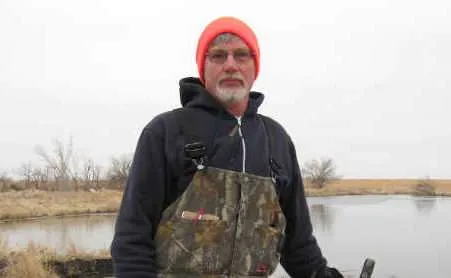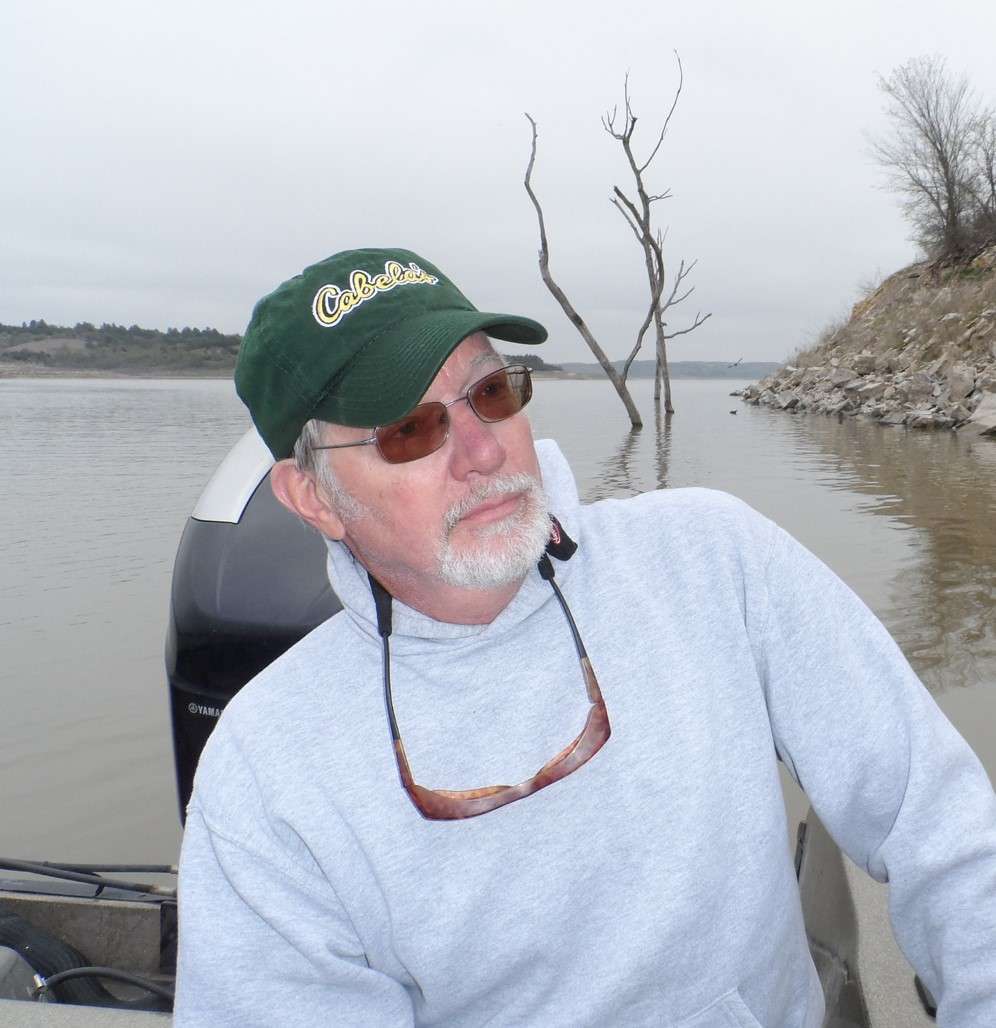It’s hard to think of floodwaters as being good for anything, but high water makes for excellent bowfishing. A few years back, I rode along with Doug and Tricia Whitehead as they bow fished flooded timber around Melvern Reservoir. Doug learned to bowfish and got his passion for the sport from his dad Marvin. He remembers following his dad along the backwaters of Fall River and Elk City Lake near Fredonia, KS when he was nine or ten. Doug soon got his own bowfishing rig and remembers the first fish he arrowed was a three or four pound carp taken at Neosho Wildlife Refuge at St Paul, KS. Doug’s dad Marvin, however, has a much different memory of how he learned to bowfish as a kid growing up around Fredonia. On the first warm day of each spring an older gentleman in the area would hang an old aluminum recurve bow and one arrow on a predetermined tree along Fall River, where it would hang the entire summer. The unwritten rules were simple; the bow was there for anyone to use, but if you used it you put it back, and if you lost or broke the arrow, you replaced it. Marvin remembers that his older brother would drop him off near the spot where the bow hung and he would shoot fish in the river until his brother picked him up again an hour or so later.
First and foremost is the fact that bowfishing, like any other form of fishing, is a search-and-find process to determine where to find fish on a given day. Doug would be looking for flooded grass beds that would harbor grass carp, as grass carp are herbivores and eat only certain grasses and plants. Both common carp and buffalo would be found in shallow, flooded backwater stretches and along shaded banks, where they’d be foraging for small shad or munching on fallen mulberries and cottonwood seeds. Long nosed gar would be found in more open stretches of backwater canals where they’d be chasing shad and other baitfish.
The equipment for bowfishing is not elaborate and pretty basic. Although fish can be shot from the bank, most bowfishermen favor a boat with some sort of raised platform from which to shoot. Bigger boats have a decent sized outboard to get them across open water fast, plus a trolling motor to slowly and silently pull them along through shallow backwaters. Serious bowfishermen love to shoot at night, so most boats are rigged with numerous lights powered by a small generator. Doug says night shooting can be spectacular because its cooler, (for the fishermen and for the fish) and more big fish are found up in the shallows, plus with their menagerie of lights, fish are easier to see in the water. The bows range everywhere from basic recurves to tricked-out compounds. Most are short to take up less space, and the compounds are specially designed to make the quick “snap-shots” bowfishermen are presented with. The bows are all fitted with reels of some description that mount to the center of the bow for reeling-in fish that are “skewered.” Arrows have large barbs on the tip that either retract or turn backwards for removal from the fish. The actual process of harvesting fish is tricky too, as there are physics involved in shooting an arrow at an object in the water. As light enters or leaves water, it is bent by a process known as refraction, making submerged objects appear shallower than they really are, thus, one has to compensate by aiming lower. Doug has found a good rule of thumb is to aim one inch below the fish for every foot the fish is beneath the surface.
This is exactly how things are supposed to work; we fathers pass along our passion and zeal for our chosen sports to our sons and daughters. So if you tire of regular fishing with a rod and reel, and you want to help remove rough fish from the lakes you usually fish, invest in a good beginners bowfishing rig as yet another way to Explore Kansas Outdoors.
Steve can be contacted by email at [email protected].




